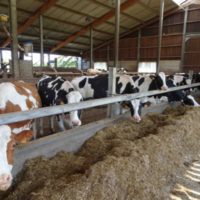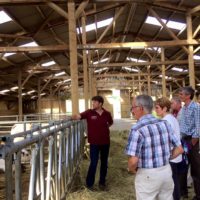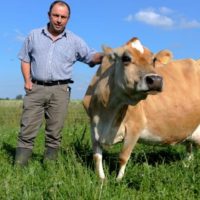Description
The farm, held in the fourth generation, currently owns 500 breeding ewes. It manages 150 hectares of permanent grassland, at both favourable and unfavourable sites, including shady valleys with acid soil at higher elevations. The grazing management is geared at maximising the proportion of pasture in the annual animal nutrition and maintaining diverse grassland swards. The more productive low-lying pastures are grazed first in the season with a sufficiently high grazing pressure to prevent shrub encroachment. Later in the season, the herd is moved to higher altitudes. Animals are kept at pasture as much as possible even in winter, grazing winter cover crops of local farms. Annually, 80 ha of grassland are mown for hay between June and August. At each field, the time of mowing is varied between years to increase plant diversity.
Payments from a results-based agro-environmental scheme for grassland biodiversity form an important pillar of the farm income. This scheme remunerates farmers based on the presence of indicator plant species. It consists of three levels with increasing amounts of per-hectare payment, depending on the number of indicator species present throughout the field (a minimum of four, six, or eight out of a list 31 species/species groups). Changing political / administrative frameworks (e.g. eligibility criteria for fields to receive direct payments) are particular challenges for a farm with this strategy.
Abstract also available in:
Dutch | French | German | Italian | Polish | Swedish





